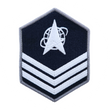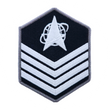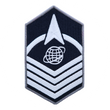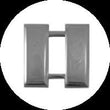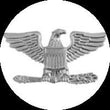Space Force Enlisted Rank
In the Space Force, Enlisted ranks are divided into three tiers: Specialists (E-1 to E-4), noncommissioned officers (E-5 and E-6), and senior noncommissioned officers (E-7 to E-9).
Specialist 1 (E-1) is earned by those who report to Space Force basic training, and Specialist 2 (E-2) is automatically earned after 6 months time in service (TIS). Airmen must spend at least 10 months TIS before being promoted to Specialist 3 (E-3), and further advancement to Specialist E-4 requires 28 months time in grade (TIG), or 36 months TIS and 20 months TIG. E-5 and E-6 are the beginning of the NCO ranks, and are earned after more than four years TIS.
Senior Noncommissioned Officers (E-7 through E-9) are the highest attainable enlisted ranks in the U.S. Space Force, with the Chief Master Sergeant of the Space Force being the highest. It is a unique noncommissioned rank in the U.S. Space Force and represents the highest level of leadership within it.
Space Force Officer Rank
The U.S. Space Force follows the same structure for officers as the Air Force.
There are three tiers of commissioned officers: Company-grade, field-grade, and general officers.
Company grade officers, encompassing pay grades O-1 to O-3, play key roles in administrative and small group leadership within their assigned flight. Notably, O-3 officers may hold authority over a flight, managing multiple airmen.
Moving up the hierarchy, field grade officers (O-4 to O-6) shoulder broader responsibilities, overseeing increased personnel and assuming command of squadrons, groups, or wings of varying sizes.
At the summit of the commissioned officer ranks are general officers (O-7 to O-10), holding the highest positions. They supervise commands comprising diverse wings, and ranks O-9 and above are often task-specific. The highest position in the Space Force is the General (O-10), and they assume the most senior positions, both at the Pentagon and in organizations like the North Atlantic Treaty Organization (NATO).






